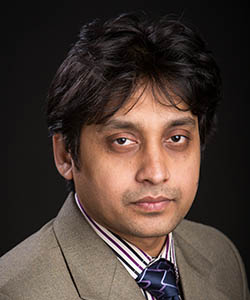Two years ago, Mohammad “Habib” Rahman and his lab members created an assistive robotic arm that could be mounted to wheelchairs to help stroke patients and people with spinal cord injuries maintain their independence. The arm allows these users to perform functions such as feeding themselves, opening doors and picking up objects.
Since then, the robotic arm they designed has gone through a lot of fine-tuning. The device can execute 19 different tasks involving 81 objects of different sizes, shapes and weights. It can even manipulate fragile items, such as coffee mugs and credit cards.

Rahman’s team is now adapting the arm for different kinds of patients with a new grant from the National Institute on Disability, Independent Living, and Rehabilitation Research.
The $1 million grant supports the team’s aim to adapt the assistive arm to be useful to people with stroke, spinal cord injuries, cerebral palsy, multiple sclerosis and amyotrophic lateral sclerosis, as well as the elderly.
Rahman, associate professor in the College of Engineering & Applied Science, is an expert in bio-robotics, including human-assist robots, medical robots and exoskeleton robots for rehabilitation and motion assistance.
Rahman and his team will work with 75 patients during the five-year grant period, gathering details for how each group uses or needs to use the arm. The ALS Association and the Medical College of Wisconsin are helping the UWM researchers find users to test the arm.
“We’ll get their feedback on our design, make modifications based on that feedback and have them come back and try the new solutions,” he said.
Powered wheelchair users have different requirements, such as using either a finger-controlled joystick, chin-controlled joystick or eye-gaze-controlled user interface to control their wheelchair. Also, they use different kinds of wheelchairs.
Their responses are important, he said, because the idea behind the funding is to translate the developed assistive robot into practice. Throughout the project, the team will work with relevant stakeholders to contribute to changing policies and practices so that insurance providers cover the product.






